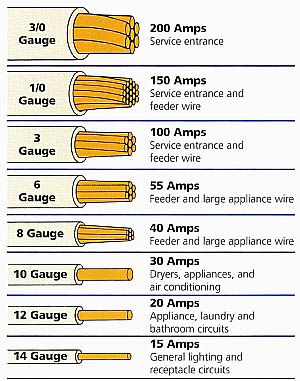
A wire is
defined as a single, and a mostly cylindrical flexible twist of metal or rod.
Wires are utilized for transmission of information over a distance, it could be
electrical, mechanical or
telecommunications signals. The formation of additional wire is mostly done by
the drawing of metal through a hole on a draw plate or in a hole. The gauges of
wires come in different and various standard sizes and are expressed in terms
of numbers of gauges. A wire is sometimes a combination of conductors and can
also be used to mean a bundle of the strands such as multistrandsed wire, and
this is the type that is usually referred to as cable in electricity or wire
rope in mechanical. Wire gauge is simply a measurement of the diameter of the
wire and it is what determines the amount of electric current that can safely
be transmitted by a wire, as well as its weight and electrical resistance.
There are different formations of wire and they can be in solid core, braided form or stranded form. But some wires are manufactured in a square, flattened rectangular, hexagonal and other kinds of cross-section, which could either be for the purpose of decoration, or for some specific technical purposes which could be a voice coils in loudspeakers. Some products like slinky toys have their coil springs and edge wound made up of some special flattened wire.
Solid wire
This type of wire can also be referred to as solid-core or single-strand wire is a type of wire that is made up of one piece of metal wire. Solid wire demonstrates that it is very beneficial when it comes to the wiring of breadboards. Solid wire is also very affordable for manufacture than stranded wire and is commonly used in a connection where there is little need for flexibility in the wire. Solid wire also has a relatively less cross-sectional area and is well exposed to the dangers of corrosion, and requires protection against the environment. However, solid wire produces mechanical ruggedness.
Stranded wire
As regards flexibility, Stranded wire is usually more flexible than the solid wire that is of the same total cross-sectional area. Arrangement of an amount of portable wires enclosed or wrapped together to form a larger conductor is known as stranded wire. Stranded wire is made use of in cases where there is a certain required high resistance to metal fatigue. And those kinds of situations are usually connections between circuit boards and in multi-printed-circuit-board devices used in electronics, for processes where the rigidity of solid wire would produce too much stress as a result of movement during assembly or servicing. Some of the examples of stranded wires are line cords in AC used for appliances such as musical instrument cables, computer mouse cables, welding electrode cables, mining machine cables, meandering machine cables, and control cables connecting moving machine parts. Stranded wire reduces the effects of increased power and loss in the wire in cases whereby during high frequencies, there are currents that travel to close to the surface of the wire due to the skin effect. Stranded wire is able to reduce this because the surface area of the strands is greater than the surface area of the corresponding solid wire. However, an ordinary stranded wire cannot reduce the skin effect solely due to the fact that all the strands are short-circuited together and they behave as a single conductor. Stranded wire will generally have a higher level of resistance than a solid wire of the same diameter because the stranded wire has a cross-section that is not all copper; there are some gaps that are unavoidable between the strands such as the circle parking problem for circles that are within a circle.
Braided wire
A braided wire is one that is made up of a number of small strands of wire that are braided together. Braided wires do not have the ability to easily break when they are flexed. Braided wires are majorly made use of in the case of an electromagnetic shield in noise-reduction cables.
Measuring Of Wire
Commercially, the sizes of wire are usually calculated by devices also known as gauges, which are made up of plates of circular or oblong form that have notches of different widths around their edges that are used to receive wire and sheet metals of different thicknesses. Each notch is stamped with a number, and the wire or sheet, which just fits a given notch, is stated to be of, say, No. 10, 11, 12, etc., of the wire gauge. The most popular wire gauge measurement is the circular forms of wire gauge measurement devices, and these measurements are often generally 3 3⁄4 inches (95 mm) in diameter, with thirty-six notches; a whole lot of them have the decimal equivalents of the sizes stamped on the back. Most of the Oblong plates are similarly notched. And the Rolling mill gauges are also oblong in form. Many gauges are made with a wedge-like slot into which the wire is thrust; one edge being graduated, the point at which the movement of the wire is arrested gives its size. The graduations are those of standard wire, or in thousandths of an inch. In some cases, both edges are graduated differently in order to allow comparison between two systems of measurement. A few gauges are made with holes into which the wire has to be thrust. All gauges are hardened and ground to dimensions.
In some applications, wire sizes are specified as the cross-sectional area of the wire, usually in mm². The advantages of this system include the ability to readily calculate the physical dimensions or weight of wire, the ability to take account of non-circular wire, and ease of calculation of electrical properties.
Cheers Electronics provides a broad spectrum range of excellent conditioned electronic tools and machinery that gives users an assurance of quality and durability. When trying to determine the accurate wire to be used for a certain job, cheers electronics is a major outlet that should be visited to get the best with an assurance of quality.











